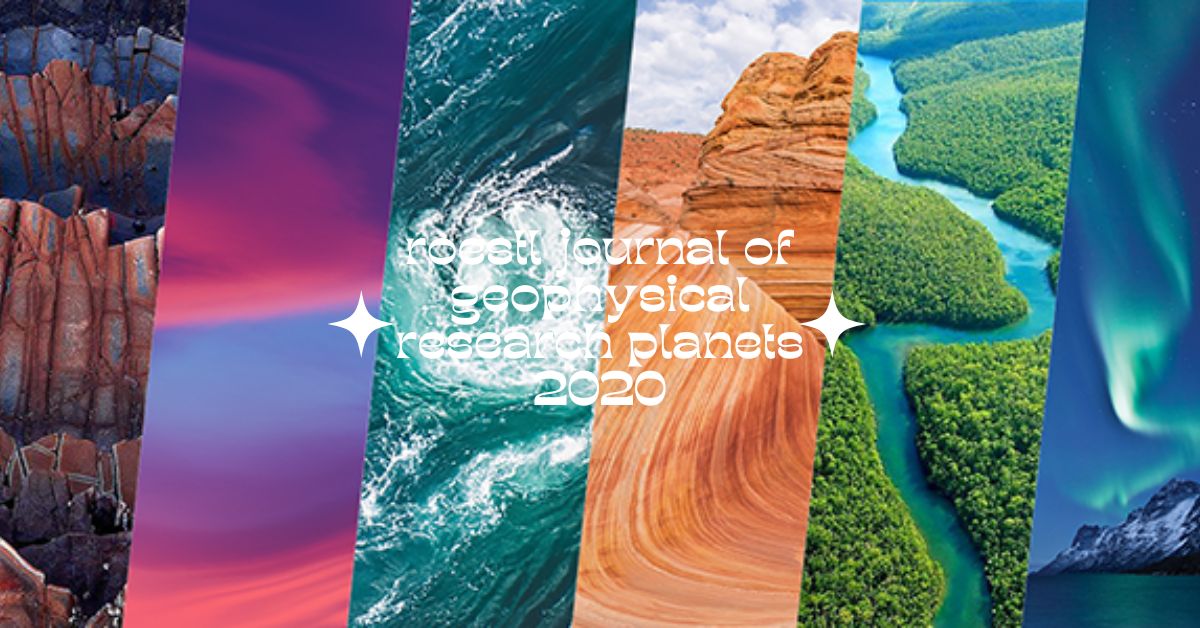roestl journal of geophysical research planets 2020 – A Comprehensive Overview
The Journal of Geophysical Research: Planets has long been a cornerstone publication in the field of planetary science. In 2020, the journal saw significant contributions that pushed the boundaries of our understanding of celestial bodies within and beyond our solar system. This article delves into the key findings, methodologies, and implications of research published in the journal during this pivotal year.
Historical Context: The Evolution of Planetary Science Publications
From Print to Digital: Transforming Scientific Communication
The journey of scientific journals from print to digital platforms has revolutionized the way researchers share and access information. This transformation has been particularly impactful in fields like planetary science, where rapid dissemination of findings is crucial.
The Rise of Open Access: Democratizing Knowledge
In recent years, there has been a push towards open access publishing, making scientific research more accessible to a global audience. The Journal of Geophysical Research: Planets has been at the forefront of this movement, ensuring that groundbreaking planetary science research reaches a wider audience.
Key Research Areas in the 2020 Edition
1. Mars Exploration: New Insights into the Red Planet
The 2020 edition of the journal featured several groundbreaking studies on Mars, including:
- Analysis of Martian soil composition
- Investigations into the planet’s geological history
- Studies on the potential for past or present microbial life
2. Exoplanet Discoveries: Expanding Our Cosmic Horizons
Exoplanet research continued to be a hot topic in 2020, with researchers presenting:
- New detection methods for identifying distant planets
- Characterization of exoplanet atmospheres
- Theoretical models of exoplanet formation and evolution
3. Lunar Studies: Revisiting Earth’s Celestial Companion
The Moon remained a subject of intense study, with papers focusing on:
- Lunar geology and crater formation
- The Moon’s role in Earth’s climate and tidal systems
- Potential resources for future lunar missions
4. Outer Solar System: Unveiling the Mysteries of Gas Giants and Their Moons
Research on the outer planets and their satellites provided fascinating insights into:
- The dynamic atmospheres of Jupiter and Saturn
- The potential for subsurface oceans on icy moons
- The complex magnetospheres of gas giants
Methodologies and Technologies Driving Planetary Science Forward
Advanced Imaging Techniques: Seeing the Unseen
Researchers in 2020 employed cutting-edge imaging technologies to capture unprecedented details of planetary surfaces and atmospheres. These advancements have allowed scientists to observe phenomena that were previously invisible to our instruments.
Data Analytics and Machine Learning: Unraveling Complex Planetary Systems
The application of artificial intelligence and machine learning algorithms to planetary science data has opened up new avenues for discovery. These tools have enabled researchers to identify patterns and correlations that might have otherwise gone unnoticed.
Remote Sensing: Probing Distant Worlds
Improvements in remote sensing technologies have allowed scientists to gather more accurate and detailed data about distant planets and moons. This has been particularly valuable in studying bodies that are challenging to observe directly.
Interdisciplinary Approaches: Bridging Planetary Science with Other Fields
Astrobiology: The Search for Life Beyond Earth
The intersection of planetary science and biology has led to exciting developments in the field of astrobiology. Researchers are using our understanding of extreme environments on Earth to inform the search for potential habitats on other planets.
Planetary Geology: Unraveling the History of Celestial Bodies
Geological studies of planets and moons have provided crucial insights into their formation and evolution. This research helps us understand not only the history of individual bodies but also the broader story of our solar system’s development.
Atmospheric Science: Decoding Alien Skies
The study of planetary atmospheres has implications not only for understanding the current state of these worlds but also for predicting their future and assessing their potential habitability.
Impact on Space Exploration and Future Missions
Informing Mission Planning: From Theory to Practice
The research published in the Journal of Geophysical Research: Planets in 2020 has had a direct impact on the planning and execution of future space missions. Findings from these studies help space agencies prioritize targets and design more effective exploration strategies.
Technological Innovations: Pushing the Boundaries of What’s Possible
Advancements in planetary science have driven the development of new technologies for space exploration. From improved propulsion systems to more resilient rovers, these innovations are expanding our capabilities to explore the cosmos.
Public Engagement: Inspiring the Next Generation of Space Explorers
The exciting discoveries reported in the journal have played a crucial role in capturing public imagination and inspiring young people to pursue careers in science and engineering. This engagement is vital for the continued progress of planetary exploration.
Challenges and Future Directions in Planetary Science
Overcoming Technological Limitations: The Next Frontier
While 2020 saw significant advancements, there are still many technological hurdles to overcome in planetary science. Researchers are continually working on developing more sensitive instruments and more robust spacecraft to push the boundaries of our exploration capabilities.
Ethical Considerations: Responsible Exploration of Other Worlds
As we expand our reach into the solar system and beyond, questions of planetary protection and ethical exploration become increasingly important. The planetary science community is grappling with how to balance scientific curiosity with responsible stewardship of the cosmos.
Collaborative Efforts: The Power of International Cooperation
The complex nature of planetary exploration necessitates collaboration on a global scale. The research published in 2020 highlighted the importance of international partnerships in advancing our understanding of the universe.
Conclusion: A New Era of Planetary Discovery
The Roestl Journal of Geophysical Research: Planets 2020 edition marked a significant milestone in our ongoing quest to understand the celestial bodies that surround us. From groundbreaking discoveries on Mars to new insights into distant exoplanets, the research published in this volume has laid the groundwork for future exploration and scientific inquiry.
As we look to the future, it’s clear that the field of planetary science is entering an exciting new era. With each passing year, our understanding of the cosmos grows, bringing us closer to answering some of the most fundamental questions about our place in the universe.
FAQs
What is the Journal of Geophysical Research: Planets?
The Journal of Geophysical Research: Planets is a peer-reviewed scientific journal dedicated to publishing original research in the field of planetary science.
How often is the journal published?
The journal is published monthly, with special issues occasionally released to cover specific topics or events in planetary science.
What types of research does the journal typically include?
The journal covers a wide range of topics including planetary geology, atmospheres, magnetospheres, exoplanets, astrobiology, and space physics.
Can anyone access the research published in this journal?
While some articles are open access, others may require a subscription or institutional access. However, there is a growing trend towards making more content freely available.
How does research in this journal impact space exploration?
The findings published in the journal often inform the planning and execution of space missions, helping agencies like NASA and ESA prioritize targets and design more effective exploration strategies.
What were some of the major discoveries reported in the 2020 edition?
The 2020 edition included significant findings related to Mars exploration, exoplanet characterization, lunar geology, and studies of the outer solar system.
How does planetary science relate to the search for extraterrestrial life?
Planetary science provides crucial information about the conditions on other worlds, helping astrobiologists identify potential habitats for life beyond Earth.
What role does technology play in advancing planetary science?
Technological advancements in areas such as imaging, data analysis, and remote sensing are crucial for pushing the boundaries of what we can observe and understand about other planets.
How can students or early career researchers get involved in planetary science?
Aspiring planetary scientists can pursue relevant educational programs, participate in internships or research projects, and attend conferences to network with professionals in the field.
What are some of the ethical considerations in planetary exploration?
Ethical issues in planetary science include planetary protection (preventing contamination of other worlds), responsible resource utilization, and balancing scientific goals with preservation of celestial environments.
Read more:
- korrie hawkins nebrask spine and pain
- Top 5 Features to Look for in a Virtual Private Server Provider
- Local Resources for Those in Medical-Related Lawsuits





